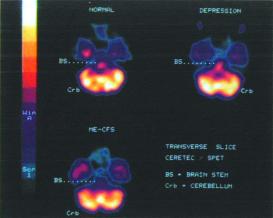This research project was concerned with the development of current practices in the psychosomatic field that are influenced by the neurosciences. Rafaela Zorzanelli pursued research into how the understanding and treatment of the classically psychosomatic conditions, which were earlier understood from a holistic and psychogenetic perspective, are being transformed by the conviction that the human being can be defined primarily in terms of his or her brain.
The psychosomatic field deals, briefly speaking, with diseases whose symptoms do not have an evident organic cause. One of the most important areas of the psychosomatic field is psychosomatic medicine, which has been developed since 1930, even though the term psychosomatic was created in 1818, by Johann Christian Heinroth, in his work Störungen des Seelenlebens (Disorders of the Soul, 1818). The psychosomatic field has always been an area of knowledge that overlaps with other fields: psychoanalysis, psychiatry, reflexology, psychophysiology, psychoendocrinology, psychoneuroimmunology, and nowadays, specifically since the second half of the twentieth century, neuroscientific influences.
Rafaela Zorzanelli aimed to investigate the impacts of the advances on neurosciences during the second half of the twentieth century upon the current researches of the psychosomatic field. A specific objective was to analyze the utilization of brain imagery techniques on the research, diagnosis, and understanding of psychosomatic illnesses. In order to do that, she examined some periodic publications concerned with the psychosomatic field from the 1950s to 1990s.
The current so-called strong neuroscientific trend, concerning mental and psychosomatic disorders, emphasizes one side of the problematic mind-body relationship—that is, the body, and more specifically, the brain. The brain imagery techniques and molecular biology have contributed to this process, because the brain and its functions were previously never investigated as well as by means of positron emission tomography (PET), functional magnetic resonance imaging (fMRI), and single-photon emission computed tomography (SPECT). The strong program presumes that everything that needs to be known can be discovered by means of probing more deeply into the brain and understanding its functioning.
One hypothesis is that the strong neuroscientific enthusiasts would like to surpass the separation between lesional and funtional diseases—which was settled during the nineteenth century—aiming to end the limits between being brain-diseased or psychosomatically ill. Thus, knowing neurochemical brain function is supposed to be quite enough to understand psychosomatic processes. In this context, it is unsurprising that many psychosomatic conditions have been understood barely as biophysiological abnormalities or neurotransmitter dysregulation. This assumption is widespread in present-day society, and it brings about many influences on the comprehension of somatization disorders, and other clinical entities such as fibromyalgia, chronic fatigue syndrome, and irritable bowel syndrome. Dismissing the limits between what is lesional and what is functional may lead us to a biologically reductionistic comprehension of diseases, in which the very psychosomatic features can be overlooked.
The objective of building a materialistic explanation to mental and psychosomatic disorders has contributed to and it was grounded upon the historical development of “brainhood” and the cerebral subject. Consistent with Vidal (2005), in the industrialized western world, since the second half of the twentieth century, the cerebral subject has been the most influential anthropological figure, having far-reaching consequences on decisions in private lives and public policy. The brainhood is the condition of being a brain, and the belief that the brain has the defining property of human beings. In other words, as Hagner (1987) and Changeux (1985) have once pointed out, the brain emerged as the organ of the soul, and as Vidal (2005) and Ehrenberg (2004) state, as the only organ indispensable for the existence of a human self and for defining individuality.

